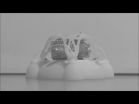Bumblebees disappearing as climate warms in North America and Europe, study finds
2015-07-09
(Press-News.org) TORONTO, July 9, 2015 - Bumblebees are rapidly declining in both North America and Europe, and a new study points to climate change as the major factor. The study, a comprehensive analysis of how climate change impacts these critical pollinators, was published in Science today.
The research shows that bumblebees are losing large amounts of the southern portion of their ranges, but unlike other species which are compensating by moving further north as the climate warms, bumblebees are not heading north. Their range areas are compressing with rapid warming and this is causing a significant reduction in their populations.
"One of the important things to me was how many species are being impacted by climate change. That was a bit of a surprise," says York University Professor Laurence Packer, an expert on bees and a co-author on the study with lead author Jeremy Kerr of the University of Ottawa. "I'd suspected some may be declining, but not such a large proportion. The fact that at the northern edges of their ranges they are not moving north as the climate changes is actually really quite worrying."
Packer insists this kind of research would be impossible without access to vast collections of curated specimens in museums, as well as in labs such as his (the Packer Lab at York U) which holds hundreds of thousands of bees. "Museums hold the basic biological information that tells us about the history of our impact on the world. They also contain the specimens that everything ultimately has to be compared to in order for identifications to be reliable," he says. For this study, researchers looked at museum records of 67 species of bumblebees in North America and Europe over the past 110 years.
"For the North American species that I work on, we know that about a third of them are in decline and in some cases this has been quite dramatically, more than 90 per cent," says co-author York University environmental studies Professor Sheila Colla.
Historically, many species of bumblebees were quite common, including the Rusty-patched Bumblebee, which was the fourth most common species in Southern Ontario in the '70s and early '80s, says Colla. She has only seen two in 10 years despite extensive searching throughout its range in Canada and the United States. "That's an indication that there's something going on with some species of bumblebees throughout their large ranges even for species which historically had been doing quite well," she says.
"One of the scariest parts of the work that I've done is just realizing how quickly the situation is changing. The bumblebees that are in decline were doing fine 50 years ago. We're talking about large changes in community composition of essential pollinators over just a few decades." That means adults today were seeing species as children that are no longer there. Their own children won't have the opportunity to see them at all.
INFORMATION:
York University is helping to shape the global thinkers and thinking that will define tomorrow. York U's unwavering commitment to excellence reflects a rich diversity of perspectives and a strong sense of social responsibility that sets us apart. A York U degree empowers graduates to thrive in the world and achieve their life goals through a rigorous academic foundation balanced by real-world experiential education. As a globally recognized research centre, York U is fully engaged in the critical discussions that lead to innovative solutions to the most pressing local and global social challenges. York U's 11 faculties and 27 research centres are thinking bigger, broader and more globally, partnering with 288 leading universities worldwide. York U's community is strong - 55,000 students, 7,000 faculty and staff, and more than 275,000 alumni.
Media Contact:
Sandra McLean, York University, 416-736-2100 ext. 22097 / sandramc@yorku.ca
ELSE PRESS RELEASES FROM THIS DATE:
2015-07-09
This news release is available in Japanese.
A suite of energy-saving traits, including underactive thyroid glands, allows giant panda bears to survive almost exclusively on bamboo, according to a new study. Yonggang Nie and colleagues report the first measurements of daily energy expenditure (DEE) in these bears, which do not have stomachs designed for such low-nutrient, high-cellulose plants. The researchers studied five captive pandas and three wild ones, discovering that the animal's DEE was just about 38% of the average for a terrestrial mammal with ...
2015-07-09
This news release is available in Japanese. How does the Campi Flegrei caldera, or subsurface rock, near Naples, Italy, withstand more uplift than other calderas without erupting? A new study shows that the caprock underlying this particular caldera closely resembles ancient Roman concrete -- and that the rock's microstructures, characterized by intertwining fibrous minerals, lead to its exceptionally high strength. The findings help to explain how the caldera has been able to withstand tremendous deformation, such as the large uplift episode that began in 1982 and raised ...
2015-07-09
This news release is available in Japanese.
While the geographic ranges of many animals are expanding northward in response to climate change, those of North American and European bumblebee species are shrinking, a new study shows. These insects are failing to migrate northward, the study reveals, and in their southern territories, their ranges are compressing -- with range losses up to 300 kilometers in both North America and Europe. The findings reveal the vulnerability of these pollinators, which play key roles in agriculture, to a warming world, hinting that they ...
2015-07-09
This news release is available in Japanese.
Researchers have designed a more efficient jumping robot with three-dimensional (3D) printing techniques and a combination of hard and soft materials. Inspired by designs in nature, such as snakes or insect larvae, soft-bodied robots are safer, more adaptable, and more resilient than their traditionally rigid counterparts, but molding and powering them has proved challenging. Now, Nicholas Bartlett and colleagues report a technique for designing and manufacturing untethered, frog-like jumping machines with ...
2015-07-09
Traditional industrial robots are rigid -- mostly metal -- and are fast, precise and powerful. Their speed and precision comes at the cost of complexity and can often pose a danger to humans who get too close. Soft robots are adaptable and resilient but slow, difficult to fabricate, and challenging to make autonomous because most motors, pumps, batteries, sensors, and microcontrollers are rigid.
But what if you could combine the autonomy and speed of a rigid robot with the adaptability and resiliency of a soft robot -- and do it relatively cheap and fast?
Harvard engineers ...
2015-07-09
Monterey, CA - Thousands of feet below the ocean's surface lies a hidden world of undiscovered species and unique seabed habitats--as well as a vast untapped store of natural resources including valuable metals and rare-earth minerals. Technology and infrastructure development worldwide is dramatically increasing demand for these resources, which are key components in everything from cars and modern buildings to computers and smartphones. This demand has catalyzed interest in mining huge areas of the deep-sea floor.
In a paper published this week in Science, researchers ...
2015-07-09
Engineers at Harvard University and the University of California, San Diego, have created the first robot with a 3D-printed body that transitions from a rigid core to a soft exterior. The robot is capable of more than 30 untethered jumps and is powered by a mix of butane and oxygen. Researchers describe the robot's design, manufacturing and testing in the July 10 issue of Science magazine.
"We believe that bringing together soft and rigid materials will help create a new generation of fast, agile robots that are more robust and adaptable than their predecessors and can ...
2015-07-09
New York, 9 July - Investing up to 3.5% of a nation's GDP in science, technology and innovation - including basic science and education - is a key benchmark for advancing sustainable development effectively, leading experts say.
In papers released July 9 in New York, international scientists advising UN Secretary-General Ban Ki-moon say closing the gap between developed and developing countries depends on first closing international science, technology and innovation (STI) investment gaps.
According to the UN SG's 26-member Scientific Advisory Board: "While a target ...
2015-07-09
Black holes can be found at the centres of most galaxies. Most have little mass compared with their host galaxy. ETH researchers, however, have discovered a particularly massive black hole, which clearly grew so quickly that the host galaxy was not able to keep pace. This calls into question previous thinking on the co-evolution of galaxies and their central black holes.
Benny Trakhtenbrot, a researcher at ETH Zurich's Institute for Astronomy, together with an international team of astrophysicists, was hunting for ancient massive black holes using the 10 meter Keck telescope ...
2015-07-09
Many areas of fundamental research are interested in graphene owing to its exceptional characteristics. It is made of one layer of carbon atoms, which makes it light and sturdy, and it is an excellent thermal and electrical conductor. Despite its apparently limitless potential, however, few applications have been demonstrated to date. Scientists at EPFL's Bionanophotonic Systems Laboratory (BIOS) together with researchers from the Institute of Photonic Sciences (ICFO, Spain) have now added another one. They have harnessed graphene's unique optical and electronic properties ...
LAST 30 PRESS RELEASES:
[Press-News.org] Bumblebees disappearing as climate warms in North America and Europe, study finds






